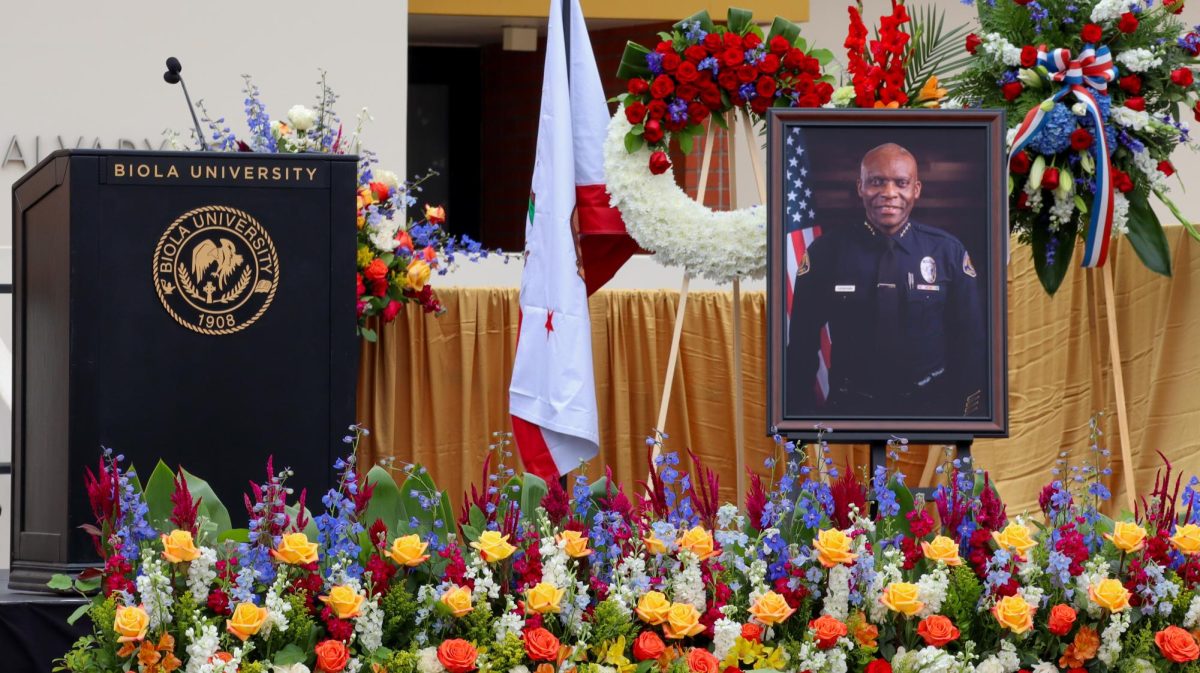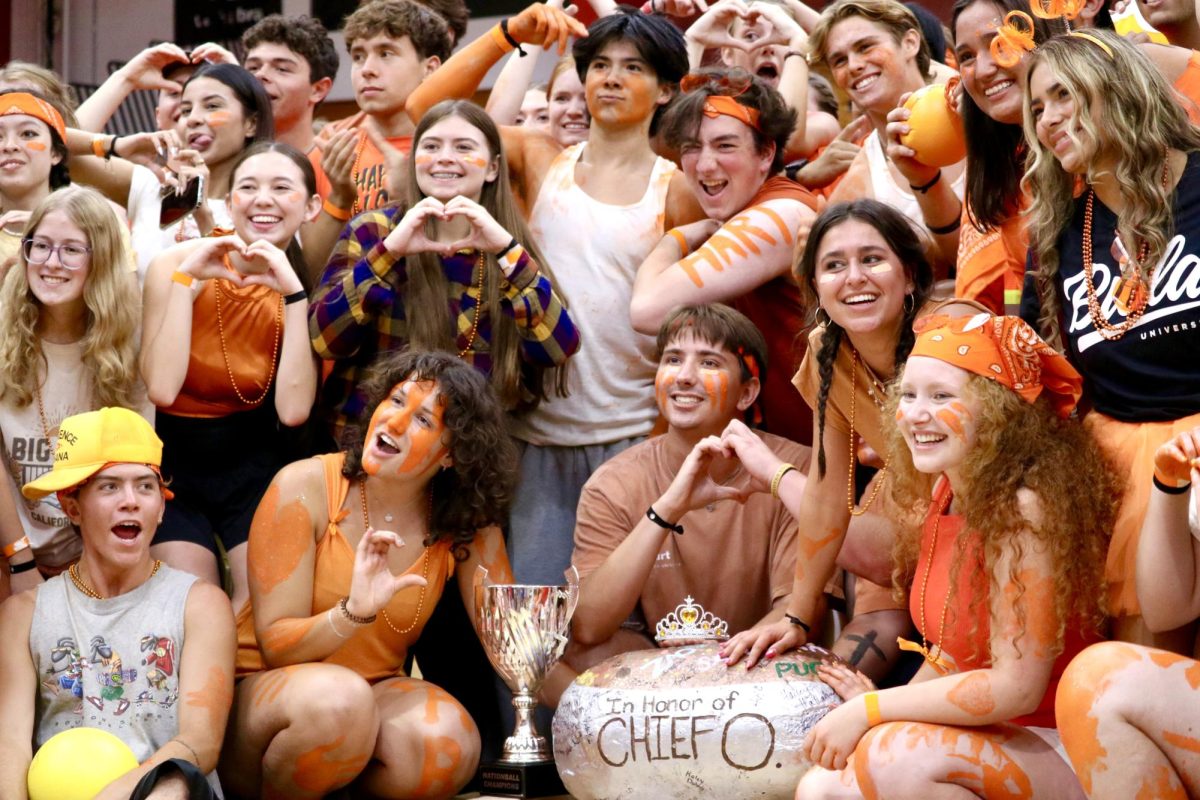U.S. Transportation Secretary Ray LaHood initiated the 2010 National Distracted Driving Summit last month, announcing new anti-distracted driving regulations and scolding car makers for adding technology to cars that distracts drivers.
Some Biola students echoed LaHood’s concerns. “I feel that we don’t need fancy technology when it comes to cars,” freshmen Carly Donohue said. “I think that we already have enough.”
Other students said they would put safety before technology. “I really don’t dream of having a car with fancy gadgets,” junior Kevin Lee said. “My most concern is my safety and the financial issue as well.”
According to Campus Safety, accidents caused by technological distractions have not occurred on Biola’s campus.
“It’s possible that such distracted-caused accidents can happen here at Biola, but collisions hardly ever happen here,” said Justin Shelby, public information officer for Campus Safety. “At my knowledge, we have very few and minor accidents like hitting parked cars. But if it happens to be a hard collision, the matters go to the sheriff to determine that.”
Driver accident rates and deaths attributed to distracting devices
Nationally, however, the problem remains evident. Nearly 5,500 people died and half a million were injured in crashes involving a distracted driver in 2009, 16 percent of the national total, according to National Highway Traffic Safety Administration data.
Regulations passed by LaHood this year prohibit commercial truck drivers, bus drivers and rail operators from texting or being on the phone while on their regular job.
In addition, LaHood criticized car makers for turning cars into entertainment centers. Although auto industries have supported bans on text messaging and hand-held cell phone use while driving, they have made new distractions. Many vehicles let drivers update Facebook accounts, surf the web, and have e-mails read aloud, along with other distractions that cause the driver’s focus to stray from the road.
LaHood called such driving distractions an epidemic that continues to grow in America. He plans to meet with car companies to discuss new safety guidelines for car technology. He also hopes to put an emphasis on safety before entertainment and identify opportunities for national anti-distracted driving efforts.
U.S. companies adopting bans on distracting technologies
The U.S. Department of Transportation announced at the summit that almost 1,600 U.S. companies and organizations have adopted policies banning various driving distractions to date. An additional 500 organizations have also committed to adopting these policies that will cover another 1.5 million employees within the next 12 months.
Individual states, including California, have also taken precautions. Currently, 21 states and the District of Columbia prohibit new drivers from using electronic communication devices, including cell phones, during the learning and intermediate stages of a three-stage driver license program. Six states have banned hand-held cell phone use for all drivers, and 19 states ban texting by all drivers.
In California, primary law bans hand-held cell phones and texting for all drivers, and prohibits all cell phone use for bus drivers. Secondary law bans all cell phone use for drivers under age of 18.
In addition, Obama’s administration prohibited federal workers from texting while driving government vehicles about a year ago.
The National Highway Traffic Safety Administration data estimates about 270 million cell phones are in use and 11 percent of drivers are using them at any given moment.
“We all know phones are distractions,” junior Kevin Lee said. “But if we put more tech gadgets on our cars, it will not help but cause the driver to lose focus.”
Under 20 age group the most distracted drivers
The age group with the greatest amount of distracted drivers was the under 20 group, according to the National Highway Traffic Safety Administration data. About 16 percent of all drivers under age 20 involved in fatal crashes were reportedly distracted. The 30-39 age group had the highest proportion of cell phone involvement.
According to data released on the U.S. Department of Transportation’s website, about 5,870 people lost their lives in 2008, and an estimated 515,000 people were injured in police-reported crashes involving at least one form of driver distraction.
The Department of Transportation website also states several other distracting activities — using a cell phone, eating and drinking, talking to passengers, grooming, daydreaming, dealing with strong emotions, reading (including maps), using a PDA or a navigation system, watching a video, changing the radio station, listening to a CD or MP3 player or other in-vehicle technologies.
“I believe that technology in cars can be distractions,” sophomore Cassie Carsrud said. “But people are more dependent on technology now. Using a cell phone or a GPS can be a benefit, especially for Biola students that don’t know their way around as far as Fullerton.”
Do cars need to be simplified?
At the Summit, LaHood concluded that he sees the technology explosion continuing to grow in the future, but disagrees with the idea of using a car as a mobile device.
Shelby said he prefers a simple car with few technological devices. “For me, personally, a car is something I use to get from point A to point B,” Shelby said. “I really don’t like the new features. It’s useful, but if it breaks, then I got to fix it. I think the simpler it is, the less likely it will be able to break.”
Carsrud also acknowledged the benefits of having more devices in a car, but said she thinks it’s important to know how to function without technology. “People functioned 100 years without it,” Carsrud said.






